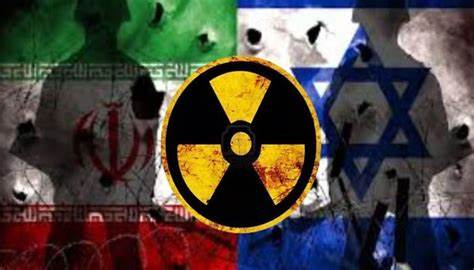The long-simmering shadow war between Israel and Iran has erupted into open conflict, thrusting two of the Middle East’s most powerful militaries into confrontation. Following Israel’s audacious airstrike on Iran’s Natanz nuclear facility—codenamed Operation Rising Lion—and Tehran’s unprecedented retaliatory missile barrage, questions are now swirling about which nation holds the upper hand if tensions escalate further.
While the Global Firepower Index ranks Israel and Iran nearly neck-and-neck in overall military strength—Israel at 15th, Iran at 16th—the composition, technology, and doctrine of their respective forces reveal deep contrasts.
A Tale of Two Armies
Iran boasts overwhelming manpower, with over 600,000 active-duty personnel and a population nearly nine times that of Israel. But Israel, with 170,000 active troops and a vast reserve force of 400,000, compensates through its integration of high-tech Western military systems and battlefield experience from decades of conflict.
Israel’s $19 billion defense budget dwarfs Iran’s $7.4 billion, enabling it to maintain a cutting-edge arsenal that includes F-35I Adir stealth fighters, Merkava Mk IV tanks, and multi-tiered missile defense systems. Iran, meanwhile, leans on quantity—its arsenal includes over 3,000 ballistic missiles, many aimed at regional adversaries.
Air Supremacy and Cyber Dominance
In the skies, Israel reigns supreme. Its air force operates one of the most advanced fleets in the world, including the U.S.-built F-35 stealth jets and F-15I strike aircraft. In contrast, Iran’s air force still flies Cold War-era F-14 Tomcats and MiG-29s, many of which have limited modernization.
Cyber warfare is another battlefield where Israel excels. Elite cyber units like Unit 8200 and intelligence agencies such as Mossad have conducted high-profile cyber-sabotage operations against Iranian infrastructure, including the Stuxnet worm and recent attacks on nuclear facilities.
However, Iran has emerged as a formidable cyber power in its own right. In late 2023, Israel reported a threefold increase in cyberattacks, many traced to Iranian-linked hackers targeting banks, water systems, and defense contractors.
Missiles vs. Missile Defense
Iran’s real strength lies in its vast ballistic missile arsenal. With thousands of short- and medium-range missiles—including the Shahab and Emad series—Iran poses a significant threat to Israel and U.S. forces in the region. Its April salvo of over 300 drones and missiles demonstrated its capacity for saturation strikes.
But Israel’s multi-layered missile defense shield—the Iron Dome, David’s Sling, and Arrow 2/3 systems—proved resilient. Over 95% of incoming threats were intercepted in the recent attack, preventing mass casualties and infrastructure damage. U.S. forces assisted in neutralizing long-range threats.
Naval Capabilities and Strategic Geography
In naval terms, Iran fields over 220 vessels, many operated by the Islamic Revolutionary Guard Corps (IRGC) in the Persian Gulf. These include small, fast-attack boats capable of swarming tactics. Israel’s smaller fleet of around 60 advanced vessels, including German-built Dolphin-class submarines believed to be nuclear-capable, offers technological superiority and long-range deterrence.
Strategically, Iran enjoys geographic depth, stretching across a vast terrain and boasting access to multiple borders. Israel, while compact, has invested heavily in strategic mobility, intelligence, and preemptive strike capability to counterbalance its vulnerability.
The Nuclear Question
Israel is widely believed to possess 100–200 nuclear warheads, though it has never officially confirmed its arsenal. Iran insists it is not pursuing nuclear weapons, but Western intelligence agencies have warned that its uranium enrichment levels are now close to weapons-grade.
The Natanz strike was a message from Israel: it will not wait for proof before acting. Tehran, for its part, has vowed “severe consequences” for what it calls Israeli aggression, raising fears of further escalation.
Allies and Proxies
Israel enjoys unwavering support from the United States, including financial aid, intelligence cooperation, and missile defense assistance. Iran, meanwhile, maintains influence through a powerful network of regional proxies—including Hezbollah in Lebanon, militias in Iraq and Syria, and the Houthi rebels in Yemen.
These groups have already intensified attacks against Israeli or Western-linked targets, suggesting the broader regional implications of the conflict are only beginning.
Expert Outlook: Escalation or Containment?
While a full-scale war remains unlikely for now, analysts warn that continued tit-for-tat strikes could ignite a regional wildfire.
“Israel has the qualitative edge—better weapons, better training, better intelligence,” said Dr. Ronit Rondsky, a Middle East security expert. “But Iran’s ability to absorb losses and fight through proxies makes it uniquely dangerous in a long war.”
With diplomatic backchannels reportedly working overtime to de-escalate the situation, much now depends on whether both sides retreat from confrontation, or whether April 2025 marks the beginning of a new era of open warfare between the region’s two fiercest adversaries.
